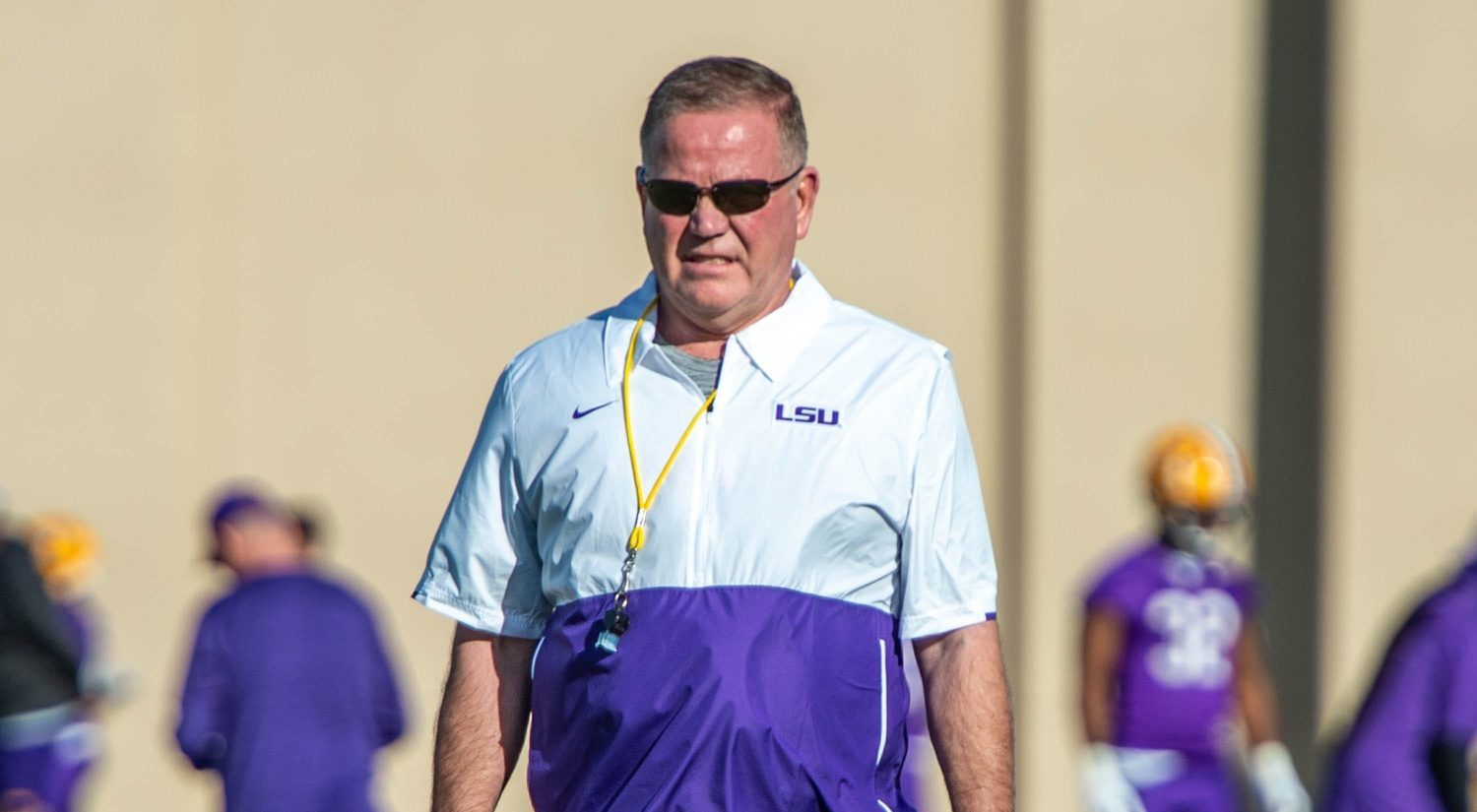
LSU football: Grading the depth chart ahead of the season opener
LSU is still figuring out its depth chart.
New head coach Brian Kelly is still figuring out a lot of stuff on both sides of the ball as the Sept. 4 season opener against Florida State approaches.
The Tigers have to replace a whole lot of productivity on offense. The only quarterback returning is backup Garrett Nussmeier, who produced just 12 percent of the pass completions, 10 percent of the passing yards and 2 of the team’s 32 touchdown passes.
The running game was similarly impacted by departures as players responsible for just 11 percent of the rushing yards and none of the 9 rushing touchdowns return.
The receiving game is different. LSU returns players responsible for 80 percent of the receptions, 70 percent of the receiving yards and 81 percent of the touchdown catches.
The defense returns 40 percent of the tackles and tackles for loss, 50 percent of the sacks and nearly half the 13 takeaways.
So there is a lot of productivity that has to be replaced.
Some of the 2022 starters will be returning starters, some will be returning players who were backups last season and some will be newcomers.
The backup positions similarly will be manned by people from all 3 groups.
When it all shakes out, the Tigers could be a better team than they were last season, but the depth is questionable in some areas.
Here’s how each position group stacks up as we draw closer to the season opener:
QB: B
Nussmeier is battling Arizona State transfer Jayden Daniels to be the starter after Myles Brennan decided to end his college career. Freshman Walker Howard is 3rd in the pecking order, but LSU believes he’s talented enough to overcome his lack of experience well enough to produce if thrust into action.
Daniels appears to have the edge in the competition to start, and his running ability gives him the greatest dual-threat dimension, though Nussmeier and especially Howard also are capable runners.
The ability to get consistent contributions from the quarterback position could be a boost to the running game. But it’s more important that whoever succeeds Max Johnson bring more consistent productivity to the passing game.
RB: C
John Emery Jr. is the favorite to be the starter after missing all of last season for undisclosed reasons, but Penn State transfer Noah Cain is pushing him. If LSU is going to have a standout runner this season, it figures to be Emery, and losing him again would be a big blow.
Armoni Goodwin and Josh Williams could help provide a deep rotation.
WR: A
This is the deepest unit on the team. The return to health of Kayshon Boutte and the return of a bevy of talented receivers led by Jack Bech, Jaray Jenkins, Malik Nabers, Brian Thomas Jr. and Chis Hilton Jr., as well as the addition of Louisiana-Lafayette transfer Kyren Lacy, should make the passing game one of the Tigers’ biggest strengths this season.
Having that many capable players would enable LSU to withstand injuries at the position, but the one loss that would be very harmful by itself would be Boutte.
TE: D
The tight end position was not particularly strong last season, and there’s no reason for the Tigers to be confident that it will be better this season.
Kole Taylor is the top returning player, Jack Mashburn is another returnee and Kelly recently said freshman Mason Taylor will contribute to the group. But this unit seems to have a very low ceiling.
OL: C
The offensive line seems to be coming into clear focus after a lot of murkiness for a long time. Kelly is hoping for a stable starting unit comprised of freshman left tackle Will Campbell, transfer Tre’Mond Shorts at left guard, former tackle Garrett Dellinger at center, transfer Miles Frazier at right guard and right tackle Anthony Bradford.
The loss of Dellinger would be particularly damaging. Cameron Wire is one of the few experienced returnees, and he provides experience and versatility from a group of backups that doesn’t have a lot of either.
DL: B
The defensive line is similar to the offensive line in that the starting unit looks good. The D-line has more continuity and arguably a higher ceiling, but the depth is uncertain.
The edge-rushing tandem of Ali Gaye and BJ Ojulari is experienced and dynamic, and the tackle tandem of Maason Smith and Jaquelin Roy is less experienced but potentially even more dynamic. The loss of Smith would be a major blow.
Missouri transfer Mekhi Wingo and sophomore end Jacobian Guillory are the top candidates to lead the second unit.
LB: C
The Tigers are looking for a bigger impact from former Clemson transfer Mike Jones Jr. than they received last season, as well as a breakout season from sophomore Greg Penn III.
The top reserves will be Micah Baskerville, the most dependable returning linebacker, and highly touted freshman Harold Perkins.
DB: B
The defensive backs will be the group that looks the most different from what it was last season. LSU hopes that a whole bunch of new faces translates into greatly improved play from the group.
The projected starting lineup features Louisiana-Lafayette transfer Mekhi Garner and Oklahoma State transfer Jarrick Bernard-Converse at cornerback, holdover Jay Ward and Arkansas transfer Joe Foucha at safety and Arkansas transfer Greg Brooks Jr. at nickelback.
Sage Ryan, whose eagerly anticipated freshman season was hampered by injuries, former Georgia transfer Major Burns, who was a role player last season, and Ohio State transfer Sevyn Banks should be key parts of the rotation.
